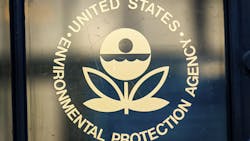What to know about the Build America, Buy America Act today
Legislators ratified the Build America, Buy America Act (BABA) 18 months ago, and the law began implementation a year ago.
Today, however, this domestic preference law lacks the guidance necessary for parties to comply with it. The law’s implementation is still facing major developments at the federal level, while it requires federal funding recipients and manufacturers to comply with unclear provisions.
Overview of BABA
BABA was created through the Bipartisan Infrastructure Law on Nov. 15, 2021. It is a domestic preference law that applies to all federal financial assistance programs. It first went into effect on May 14, 2022.
The law specifically states that “none of the funds made available for a Federal financial assistance program for infrastructure, including each deficient program, may be obligated for a project unless all of the iron, steel, manufactured products, and construction materials used in the project are produced in the United States.”
BABA affects all sectors of infrastructure. For the water sector, any water infrastructure projects receiving any amount of federal funding, including from State Revolving Funds, will need to comply with BABA requirements.
The Act specifically covers three categories of items in a project: iron and steel, manufactured, products, and construction materials. More information about these categories is available here.
To comply with BABA, each product used in a project needs either a corresponding certification letter from the manufacturer or an EPA-issued waiver. More information about waivers is available here.
EPA has two key sources for information on BABA: an initial guidance document published on April 18, 2022, and a supplemental document published on Nov. 3, 2022.
Issues with BABA implementation
BABA is not the first domestic preference law to affect the water sector, but its implementation has been disruptive for utilities and manufacturers alike.
“The challenge I think for all of us right now is how to navigate in a situation where we don't have the definitive answers,” said Vanessa Leiby, executive director of the Water and Wastewater Equipment Manufacturers Association (WWEMA).
Watch the full interview with Vanessa Leiby here.
Federal agencies have been slow to provide adequate guidance on BABA compliance, and still have not clarified issues surrounding requirements for manufactured products.
“I’d say the implementation of the provision has been a bit challenging,” said Josh Mahan, director of government and industry relations at Xylem. “I think a couple of reasons explain that.”
The guidance issued by EPA’s Office of Management and Budget in April 2022 was very general, said Mahan, leaving a lot of implementation questions open.
The more in-depth guidance from EPA’s Office of Water was only issued in November of 2022, a year after the enactment of the Bipartisan Infrastructure Law and six months after BABA’s enforcement deadline. However, many important BABA implementation questions were still unanswered.
“Now, in May of 2023, we’re still waiting on additional guidance from the Office of Management and Budget, some clarity on key provisions of the law, and how federal agencies are going to administer it,” Mahan said. “I think the timeline and the rollout of the guidance has created a lot of uncertainty for folks interested in accessing federal dollars for infrastructure funding.”
One issue for BABA is how it decides whether manufactured products are BABA-compliant. BABA requires more than 55% of the cost of a product’s components to be mined, produced, or manufactured in the U.S. However, calculating this percentage is still unclear.
“EPA has indicated they’re waiting on the Office of Management and Budget to add some more definitional certainty as to that 55% calculation,” Mahan said. “There’s precedent for how that’s been interpreted in the past in other contexts but, specifically to the Build America, Buy America Act, there still remains some uncertainty as to what really qualifies as ‘produced in the United States.’”
Recent developments
One year after BABA’s initial implementation, the water sector is continuing to adjust to the law. Over the past few months, more utilities are looking for project-specific waivers and EPA is still working on providing extensive guidance.
An uptick in waivers
EPA began to grant initial, general BABA waivers a few months after the Act’s May enforcement deadline, in June and September of 2022. Now, the agency may be entertaining a greater number of project-specific waivers.
The federal government had issued a number of short-term waivers to keep projects moving while funding recipients still waited for final guidance.
“A number of the national waivers have now expired or are expiring — and so we’re in a situation where there’s a number of projects that are hitting the street and starting to require the Buy America requirements,” Leiby said.
However, manufacturers and funding recipients still do not have enough information to always know that their products are in compliance.
“We do know that EPA is starting to entering some project-specific waivers, possibly as a way to start to get some of these projects moving,” Leiby said.
Mahan said that Xylem has also seen an uptick in funding recipients looking into BABA waivers.
“We often have seen circumstances where there are unique attributes of a specific project that have lent itself towards their interest in pursuing waivers, whether it’s in the public interest, non-availability for certain products, or increased costs,” Mahan said.
Providing more guidance
One proposed rule from the Office of Management and Budget (OMB) that would offer further guidance closed its public comment period on March 13. The rule could provide much more needed information but may not fully resolve manufacturers’ and utilities’ questions about implementation.
“Unfortunately, a lot of it was cut-and-paste from Buy American — direct federal procurement language — and it really provided no clarity whatsoever on how a manufacturer is supposed to calculate and certify compliance with the 55% or the materials component test,” Leiby said.
And so, after receiving comments on the proposed rule, EPA’s Made in America Office has begun working with a federal interagency group to help develop further guidance. However, that guidance may still take a long time to reach utilities and manufacturers.
“Our understanding, based on a meeting we had in our Washington Forum last week, is that the final decisions may not be available until mid-summer,” Leiby said. “And then, after that’s finalized, EPA is going to engage in extensive stakeholder input. They may not have their implementation guidance or procedures completed until the end of the year.”
It may still be quite some time until funding recipients and manufacturers can feel certain of their BABA compliance.
“I think we've got a ways to go before we get into a place where federal funding for water infrastructure is able to move quickly into the system, unencumbered by kind of this uncertainty,” Mahan said.
About the Author

Jeremy Wolfe
Jeremy Wolfe is a former Editor for Wastewater Digest.
